The beginning of the Vienna Ball Culture
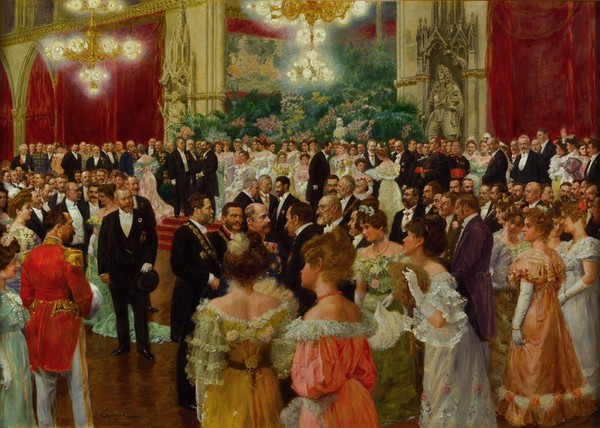
[아츠앤컬쳐] 합스부르크 시대의 귀족 전통에서 비롯된 빈 무도회는 원래 귀족들의 독점적인 사교 행사로 시작되었다. 이러한 행사 중 가장 하이라이트는 오스트리아 외무장관이자 후에 재상이 된 클레멘스 폰 메테르니히(1773~1859)가 주도한 빈 회의(1814~1815)였다. 당시 비엔나 귀족들의 화려한 무도회는 ‘춤추는 의회(The Dancing Congress)’라는 별칭을 얻었는데, 나폴레옹 전쟁의 혼란 이후 군주제의 우아함이 회복되었음을 상징했다.
메테르니히는 유능한 외교관으로서 무도회, 연회, 살롱과 같은 사교 행사의 중요성을 깊이 이해하고 있었다. 군주, 외교관, 상류층은 이러한 행사를 통해 개인적 관계를 맺고 비공식 석상에서도 신중한 협상을 이루어냈다. 이로 인해 빈 회의는 단순한 외교 협상의 연속이 아니라 대규모 사교 행사로서도 중요한 의미를 가지게 되었으며, 신성 동맹과 유럽 협조 체제로 나폴레옹 이후 유럽의 질서를 형성하는 데 기여했다. 메테르니히 자신도 이러한 무도회의 단골 참석자였으며, 빈 사교계의 매력을 활용해 자신의 외교적 목표를 달성했다. 그가 보여준 외교적 연극의 정점은 바로 무도회에서 이루어졌으며, 우아한 왈츠와 고급 와인은 단순한 사교 수단을 넘어 정치적 도구로 작용했다.
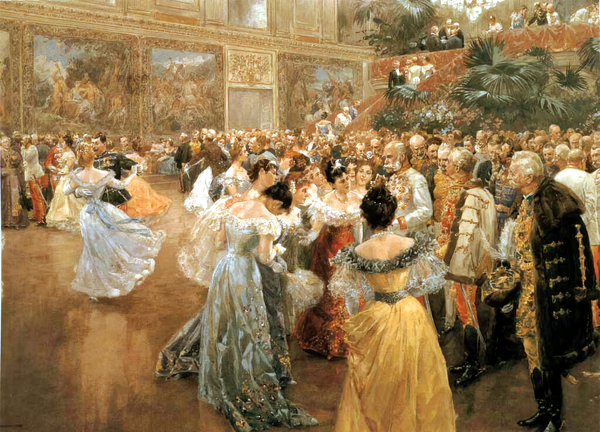
몇 년 후, 요한 슈트라우스 2세(1825~1899)는 빈 무도회 문화를 확립하며 이를 도시의 문화적 정체성과 매력의 상징으로 만들었다. ‘왈츠의 왕’이라 불리는 그는 우아함과 낭만이 깃든 선율을 통해 빈 무도회를 전설적인 행사로 변화시켰고, 그의 음악은 빈 사교 전통의 일부가 되었다. 처음에 왈츠는 파격적인 밀착 포즈와 빠른 회전 동작 때문에 논란을 불러일으키기도 했으나 슈트라우스는 왈츠를 세련미와 활력을 갖춘 선율로 단순한 춤이 아닌 예술로 승화시켰고, 비엔나를 ‘무도회의 수도’로 만들었다.
왈츠의 인기는 사회적 변화와도 맞물려 있었다. 당시 슈트라우스의 음악은 귀족 문화를 동경하던 빈의 중산층에게 계층 간의 경계를 허물고 모두가 함께 즐길 수 있는 우아한 춤 문화로 향상시켰다. 오늘날에도 빈의 무도회 전통은 이어지고 있으며, 특히 비엔나 오페라 무도회는 가장 상징적인 행사가 되었다. 이뿐만 아니라, 택시 기사, 커피하우스 주인, 엔지니어 등 다양한 직업군이 주최하는 ‘전문 직업별 무도회’에서도 슈트라우스의 왈츠가 울려 퍼지며, 그의 음악은 여전히 무도회의 핵심 요소다. 화려한 샹들리에와 금박 장식으로 꾸며진 웅장한 무도회장은 세련된 춤과 사교의 밤을 위한 무대가 된다.
빈 회의에서 시작된 전통처럼, 빈의 무도회는 단순한 사교 행사가 아니라 때로는 비즈니스를 성사시키거나 비공식적인 협상의 장이 되기도 한다. 기업, 명품 브랜드, 부유층 인사들은 이러한 행사에서 네트워킹과 브랜드 홍보의 기회를 찾는다. 최근에는 기업 후원과 파트너십이 활발해지면서, 무도회 전통이 새로운 에너지를 얻고 있다. 대부분 빈의 무도회 시즌은 11월 11일에서 부활절 40일 전인 성수요일까지 열리지만, 가끔 여름에 특정한 궁전의 아름다운 정원에서 야외 무도회가 열리기도 한다.
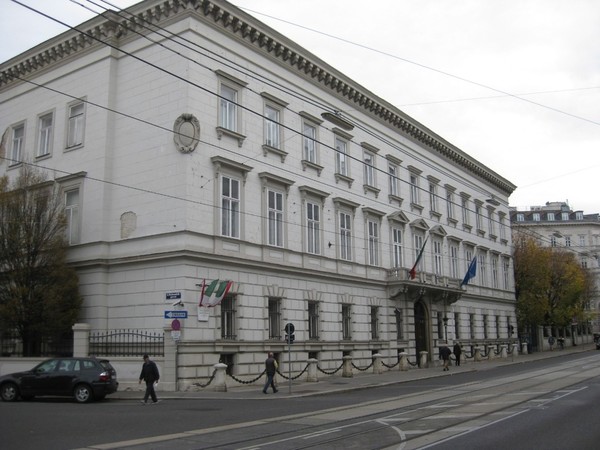
The beginning of the Vienna Ball Culture
Rooted in the aristocratic traditions of the Habsburg era, Vienna’s ball events began as exclusive gatherings for the nobility. One of the highlights of these events was the Congress of Vienna (1814–1815) orchestrated by the Austrian Foreign Minister and later Chancellor, Klemens von Metternich (1773–1859). During the Congress, Vienna’s aristocracy hosted lavish balls, earning the era the nickname "the dancing Congress". These events symbolized the restoration of monarchical elegance after the turmoil of the Napoleonic Wars.

Metternich, a skilled diplomat, understood the importance of social gatherings - balls, banquets, and salons—as tools for informal diplomacy. These events allowed rulers, diplomats, and elites to forge personal connections and discreetly negotiate terms away from official chambers. This resulted in, that “The Congress of Vienna” was not only a series of formal negotiations but also a grand social spectacle, shaping post-Napoleonic Europe through alliances like the Holy Alliance and the Concert of Europe. Metternich himself was a frequent attendee, using the charm and wit of Viennese society to advance his political goals. Metternich’s association with the Vienna ball reflects his mastery of diplomatic theatre, where waltzes and wine served as instruments of statecraft, ensuring his influence extended beyond the negotiating table into the very heart of European high society.
Few years later, Johann Strauss II, orchestrated Vienna’s Ball Culture, with its glittering ball season, a hallmark of the city’s cultural identity and its charm. The grandeur Johann Strauss II (1825–1899) – see article in February edition, the composer whose melodies became synonymous with elegance, romance, and the spirit of 19th-century Austria. Known as the “Waltz King,” Strauss transformed Vienna’s ball events into legendary spectacles, embedding his music into the very fabric of the city’s social traditions. His influence reshaped dance customs elevated the waltz to an art form, and solidified Vienna’s reputation as the global capital of balls.
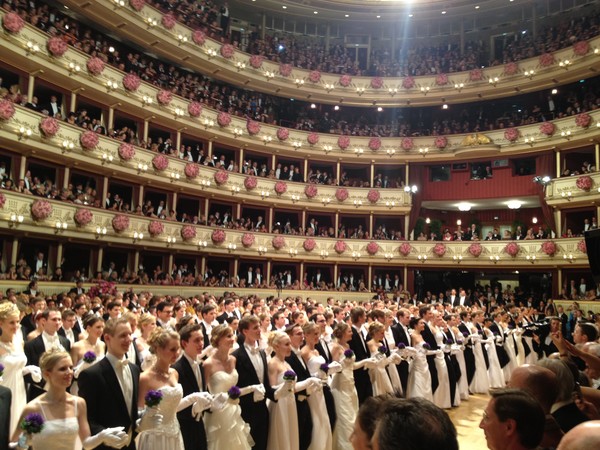
The waltz, with its daring close hold and swirling motion, was initially met with scepticism, even scandal. Yet Strauss, with his gift for crafting melodies that balanced sophistication and exuberance, turned the waltz into a cultural phenomenon. The waltz’s rise mirrored societal shifts: as Vienna’s burgeoning middle class sought inclusion in elite traditions, Strauss’s music bridged social divides, offering a dance that was both accessible and enchanting. Over time, these balls evolved into celebrated cultural events, with the Vienna Opera Ball emerging as one of the most iconic to academic “Fächerbälle” (each Society group has its own Ball event, eg. Taxi, Coffee shop owner, engineers, and many other) still dance to his melodies, ensuring that the waltz remains the soul of the evening. Lavish ballrooms, adorned with opulent chandeliers and gilded décor, set the stage for an evening of refined dancing and socializing.
As it started with the “The Congress of Vienna” a ball in the Viennese content means also concluding a business or find a way unofficial to discuss with your opponent. Corporations, luxury brands, and high-net-worth individuals see these events as unparalleled opportunities for networking and brand positioning. Sponsorship deals and corporate partnerships have injected fresh energy into the tradition, with companies keen to associate their names with the sophistication and timeless allure of Vienna’s balls. Most of the ball events are hold during the carnival time between 11.11. and Ash Wednesday, 40 days before Easter. Some of the ball events are held in summertime, mostly with the experience of using some of using the beautiful garden of certain palace.
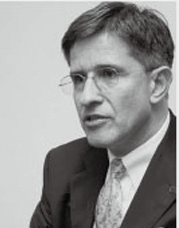
글 | 볼프강 슬라빈스키 Wolfgang Slawinski
서울명예시민
한·오스트리아협회 회장

